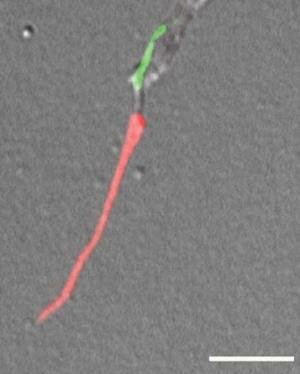Toward A Cure For Inherited Eye Diseases
Researchers at the University of Pennsylvania School of Medicine have identified proteins in the rod and cones of the eye that could lead to the discovery of the genetic causes of a host of inherited eye diseases.
The investigators hope to gain a clearer understanding of what goes wrong at the most basic level in these diseases that cause blindness and other disorders.
Specifically, they have identified and measured the types and amounts of proteins in the light-sensing parts of the eye’s retina.
These light-sensitive structures, called photoreceptor sensory cilia, enable the rod and cone cells of the retina to detect light.
While the proteins of cilia in single-celled organisms have been studied, this is the first time that a comprehensive description of the proteins of a mammalian cilium – used for movement and sensing – has been determined.
“We want to understand how cilia work normally and how their function is disrupted in disease, because their dysfunction is such an important cause of disease,” says senior author Eric A. Pierce, MD, PhD, Associate Professor of Ophthalmology at the F.M. Kirby Center for Molecular Ophthalmology at Penn.
“One of the first steps to achieve this is to put together a complete parts list. Now that we have that, we can figure out how all 2000 proteins we’ve identified fit together correctly.”
Cilia, specialized structures that extend from cells, have recently taken the spotlight in studying genetic diseases. They are commonly used by cells for movement or sensory purposes, and, in many cases with mammals, have been thought to be remnants of evolution without much purpose.
But new research has shown that mutations in genes that encode the proteins of cilia are common causes of a host of genetic diseases, including inherited retinal diseases and polycystic kidney disease.
Cilia diseases can also affect multiple organ systems in such disorders as Bardet-Biedl Syndrome, which causes kidney disease, obesity, polydactyly, diabetes, and retinal degeneration; Senior-Loken Syndrome, which causes kidney disease and retinal degeneration; Joubert Syndrome, which causes neurological disease, kidney disease, and retinal degeneration; Usher Syndrome, which causes deafness and blindness; and Meckel Syndrome, which causes kidney disease and neural tube defects.
Lead author Qin Liu, MD, PhD, Research Assistant Professor, and Pierce collaborated with a team at The Wistar Institute led by David Speicher to perform the analyses for this study. The researchers used mass spectrometry to identify and measure the amounts of proteins in mouse photoreceptor sensory cilia.
They found many proteins in the cilia that had not been identified in photoreceptors before. This includes proteins involved in intraflagellar transport, which is a process that moves materials from the cell body into the cilia.
Mutations in proteins associated with this transport system lead to a number of cilia-related diseases.
The investigators also found 60 proteins encoded by genes on chromosomes implicated in 23 inherited cilia-related disorders. Armed with this knowledge, researchers hope to be able to more quickly find the exact genetic mutations that cause these 23 cilia diseases, which include eye and kidney diseases, among others.
Pierce is a pediatric ophthalmologist who specializes in caring for children with inherited retinal degenerations. He says that about half of his patients with degenerative eye diseases have a type of disease that can be identified according to its genetic mutation.
He believes that this research will help identify the genetic causes behind the other half of his patients’ conditions.
“We’re narrowing the field,” says Pierce. “This research in and of itself can’t find a cure, but it’s a great start because it tells you what proteins to study.”
The study will appear in the August print issue of Molecular & Cellular Proteomics and has been pre-published online. Co-authors also include Edward N. Pugh, Jr., from Penn; Glenn Tan, Natasha Levenkova, and John J. Rux, of the Wistar Institute; and Tiansen Li of Harvard Medical School.
The National Eye Institute, the F.M. Kirby Foundation, The Foundation Fighting Blindness, Research to Prevent Blindness, the Rosanne H. Silbermann Foundation, the Mackall Foundation Trust, and the Commonwealth University Research Enhancement Program provided funding for this research.

"Isolated mouse photoreceptor sensory cilium. Red is the rootlet, which helps connect the cilium to the cell. Green is the axoneme, the central part of the cilium. Scale bar 5 microns. (Credit: Qin Liu, MD, PhD and Eric A. Pierce, MD, PhD, University of Pennsylvania School of Medicine)"
Source: University of Pennsylvania School of Medicine
|